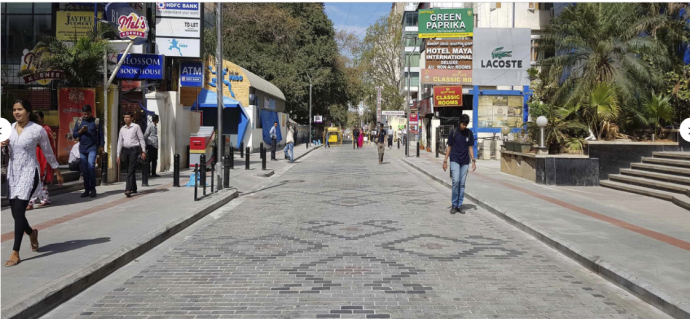making walkability in vogue in india, still a far cry

In the growing urban centres of today’s world, accessibility and walkability have become one of the growing concerns. Accessibility, in context to urban mobility, refers to a measure of the ease of reaching (and interacting with) destinations or activities distributed in space and is an important aspect in determining the quality of life of the city.
In the many approaches devised to measure accessibility, first and last-mile connectivity has often not been given required prominence. With growing traffic congestions leading to horrible pollution levels, more emphasis needs to be put on building walkable cities.
Walkability is largely related to safety. Public plazas and footpaths feel bleak and unsafe. Walkable places are supposed to be comfortable, convenient, healthy and sustainable, but they can be very difficult to achieve. In India, the threats to walkable cities start with low density, poor connectivity and accessibility of footpaths and ranges to lack of maintenance of existing footpaths and pedestrian infrastructure.
Universal design has not been completely incorporated in the design. There are deficiencies in the footpath design and its standardisation leading to confusion and encroachment by street vendors, utilities and homeless population.
Also, the nuisance created by garbage/ debris disposal and urination along the boundary wall has been a reflection of the attitude of people towards footpaths. Use of the footpaths as bypass route in traffic jams by the two-wheelers and para transits has been a big problem. This unruly motorist behaviour and acute modal conflicts have caused a number of accidents. Scarcity of street lighting and an increase in a number of incidents of accidents and thefts has increased the concerns on degree safety and security in the walkable streets. Also, the extreme weather conditions in most parts of the country make open walking pathways less accessible for a large portion of the year.
Walkability depends upon characteristics of the built environment that influence the likelihood of walking being used Walkability is an excellent tool for development of a good urban design and increase in the liveability of the city. If developed to its full potential it will become the spine of the last and first mile connectivity. as a mode of travel.
In order to encourage walking in a city, a dense mixture of land uses, integrated with shaded streets and open spaces, all designed for people should be incorporated. It will not only make pedestrians feel safe and secure but also will make walking a pleasurable activity.
A lot of initiatives have been taken up by various institutions to overcome the identified challenges and promote walkability in the city. A few of the example includes Raahagiri Initiative in Delhi and NCR, and redevelopment of Church Street, Bengaluru.
There has been an attempt by Delhi Development Authority in 2019 to form a policy to enhance Walkability in Delhi. World Resource Institute has been promoting the installation of lights on the pathways. An interesting initiative has been taken up by OLA Mobility Institute with the preparation of the ease of moving index considering the accessibility of footpaths to people in 20 cities.
It has become imperative that the new development should be established as dense, walkable and transit-supportive developments.
Redeveloping the public spaces which are currently built around the automobile, on the principles of walkability should be emphasised upon. This highlights the needs for the accommodation of the informal sector, refinement of street standards and incorporation of inclusive development.
Photo Credits: Website of Venkataramanan Associates)
Development of safe, integrated, connected pathways which are accessible throughout the year has become imperative to be integrated into the development of Indian Cities. Though it may sound difficult at first, with strong leadership, innovative ideas, a smart investment and sound planning principles, it can be achieved in no time.

